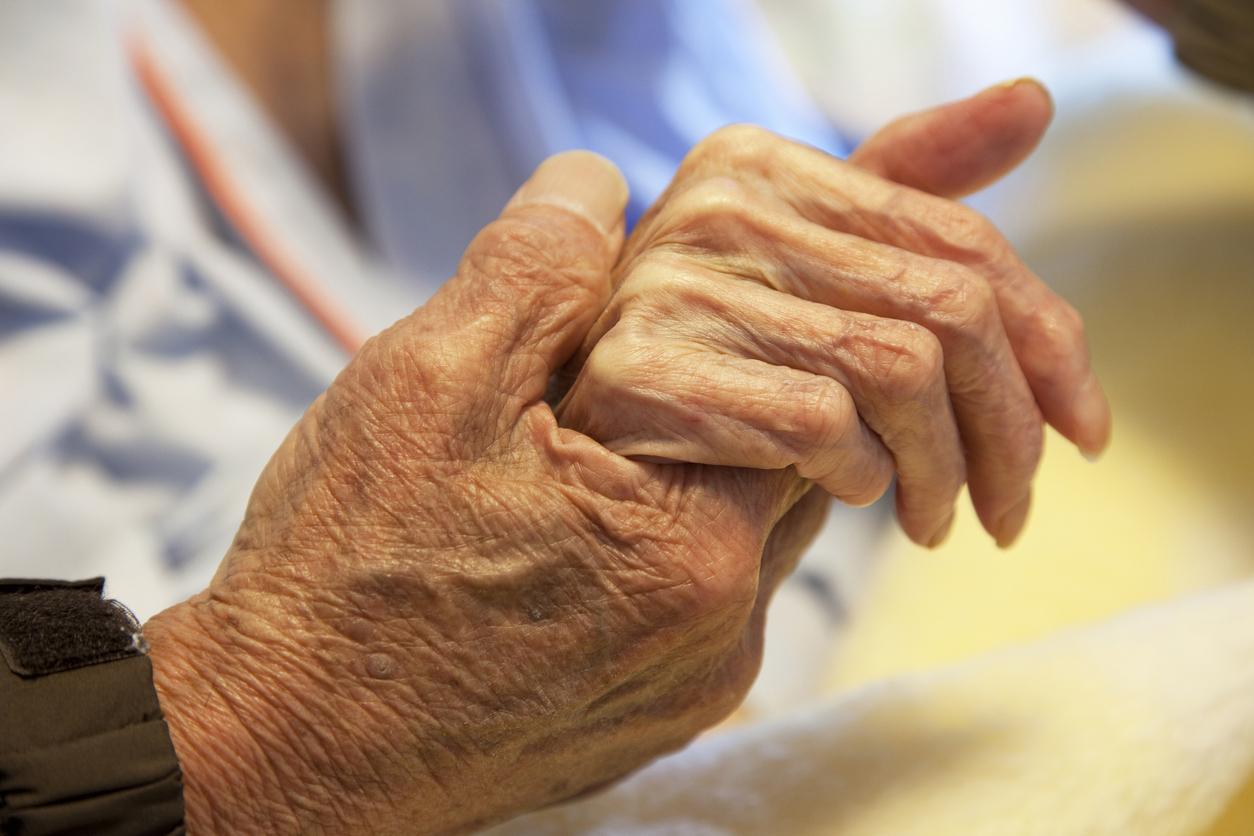While the bill on the end of life must be presented in the coming days to the President of the Republic before then being debated in Parliament, Fait-Docteur collected the testimony of Dr Roland Lallemand, palliative care doctor at residence. A straightforward look at the reality of these moments.

– Why Doctor: You carry out a palliative sound activity at home. In the context of the debate on the end of life, what experience does this activity give you on this subject?
Dr. Roland Lallemand : I actually ceased a liberal activity after 45 years of practice in Clichy-sous-Bois and I wanted to extend my palliative care activity at home because I had a whole group of patients who were reaching the end of their lives and I always tried as much as possible to support my patients until the end.
Accompanying the end of life is, for the patient himself and for the people around him, an unsuspected richness of humanity. And for doctors, this support constitutes in my eyes the highest point of medical activity.
“It is possible to take side roads”
– What does this support mean to you?
It is a period of great doubts, where we really ask ourselves lots of questions, where we become aware of what transgression represents: there is certainly the law, recommendations for good practice, protocols but we realize that in this end-of-life period, all this takes a bit of a back seat and that it is possible to take side roads.
– What do you mean by this term “crossroads”?
Faced with situations that are different each time, infinite doubt grips the doctor who tries to best meet the patient’s expectations. When I speak of sideways, of transgression, that does not mean that the prohibition disappears. It remains very present, but the transgression is there too: we know very well that by increasing painkillers and opioids at the end of life, in all conscience, we shorten this life. It is all these questions that make these moments so rich.
– By what actions, with what words have you accompanied your patients?
Everyone has their own way of understanding them, each end of life is unique, singular, there can be no common attitude in fact. But in the support, there is a moment of change which is very important, it is when the anxiety takes over the patient, the moment when, inevitably, it will have to be treated, when it is necessary to tell him ‘we have reached the stage where we will have to help you’. Here, we need more than simple agreement from the patient, we must ensure their support, their good understanding of the beneficial effects that we are looking for, that this is part of their fight. There are few words, it’s more in the attitudes, the reactions, that things are said.
“Human nature is combative!”
– More concretely, can you give us examples of actions as the end of life approaches?
My first support was in 1976, I was a very young doctor, I had not been taught about palliative care during my studies, I learned in the field. It was a patient to whom I had to announce that we were going to switch to morphine to relieve her. When I told him this, explaining to him what morphine was, the progressive doses, the effects on pain, on consciousness, on imagination even, that it was the nurse with whom I was teaming up who was going to come by regularly to give medication, wash him, help with his diet but it’s me who will do the injections, she acquiesced with a look and a handshake. Death, without the word being spoken, had just been mentioned and had slowly entered into her. By her prolonged, deep, resolute look, followed by a slow beating of her eyelids, I understood that she was telling me ‘If you want…’
– In your book written with Alain Cordier, vice-president of the CCNE (National Consultative Ethics Committee), you tell 17 end-of-life stories. What are the elements that we find most often at moments?
I tell 17 life stories with an inevitable end point. For each of these patients, I tell the story of their life, their character, what their personality was like. And I tell their struggle because most, even people we considered a little depressed, anxious, when they face serious situations, their personality is revealed and we realize that human nature is combative! But there is a moment, and this is very clear, when everyone says ‘listen, stop, I’ve had enough, no relentless therapy, it’s over’. At this moment, we move on to something else, there is a shift, a moment of resignation.
– And yourself, what did you feel in those moments?
I noticed throughout the writing of this book that the emotion that I felt while accompanying these patients is still there, it does not disappear, it permeates me.
– Your book appears while the end of life is the subject of a bill which must be presented to the President of the Republic in the coming days. This text speaks as a condition for the implementation of assistance in dying, in particular, of vital prognosis undertaken in the medium term. At what point can a doctor have a certain prognosis on this point?
This is a very important question. The current law, the Claeys-Leonetti law, speaks of vital prognosis initiated in the short term to introduce deep and continuous sedation until death.
“Advance clock time”
But we must wonder about the time that can be long between the request for help of the incurable patient who wishes to die and the implementation of this sedation. We owe a response to these patients whose death is planned, inevitable, and who ask for help to shorten this time. There is an expression that I really like, it is ‘advance the time of the clock’. When care is no longer an answer, refusing the requested help is condemning the sick to the most terrifying solitude. But what does medium term mean? Six months, twelve months? What matters most is the question of support, that is to say how you support the patient from the moment when you too, with him, see that things are indeed clear. If his decision is clear and he wants to end it, will I ask myself the question of the short, medium or long term?
– You say with Alain Cordier that the law must evolve. Why and how?
The alternative is not necessarily between no new law or a new law that reinvents everything! It may also be in modifications to the current law, in particular on the terms of the right to have deep and continuous sedation maintained until death. What poses a problem is this word ‘short term’.
“For the end of human life”, by Alain Cordier and Roland Lallemand, Hermann editions
















